The Met Prepares for Its ‘Sleeping Beauties’ Era
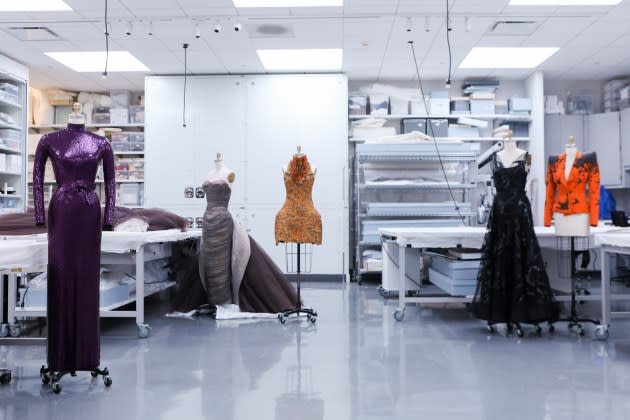
As another sign of the demystification and humanization of fashion, the Metropolitan Museum of Art’s Costume Institute drew back the curtain on its inner chamber Tuesday morning with a walk-through about its spring exhibition “Sleeping Beauties: Reawakening Fashion.”
The spring show will open to the public on May 10 and fold Sept. 2.
More from WWD
Nearly two dozen media types were ushered into the Costume Institute’s library, where its namesake supporter and Condé Nast’s Anna Wintour personally introduced herself and greeted each one with a handshake.
The Met’s Marina Kellen French director and chief executive officer, Max Hollein, explained the spring show not only will focus on the Costume Institute’s permanent collection, but will also highlight how some of those garments are transformed, as well as how they are worn, versus objects just being shown.
To dust off any traces of a ho-hum look-at-the-historic-dresses exhibition, innovative technology will be applied for a multisensory experience. “At the end, it sometimes gives back the integrity of these costumes by making sure that sometimes you can actually feel them, smell them and experience them to have a whole holistic idea about their usages,” Hollein said.
In another wink to the digital age, TikTok is taking on the lead sponsorship role, with support from Loewe and Condé Nast.
“One of the reasons for approaching TikTok was the platform’s accessibility. We really wanted to have the biggest, broadest platform possible in terms of how the show is decimated more globally,” said Wendy Yu, curator in charge Andrew Bolton, when asked about app, which is controversial in the U.S.
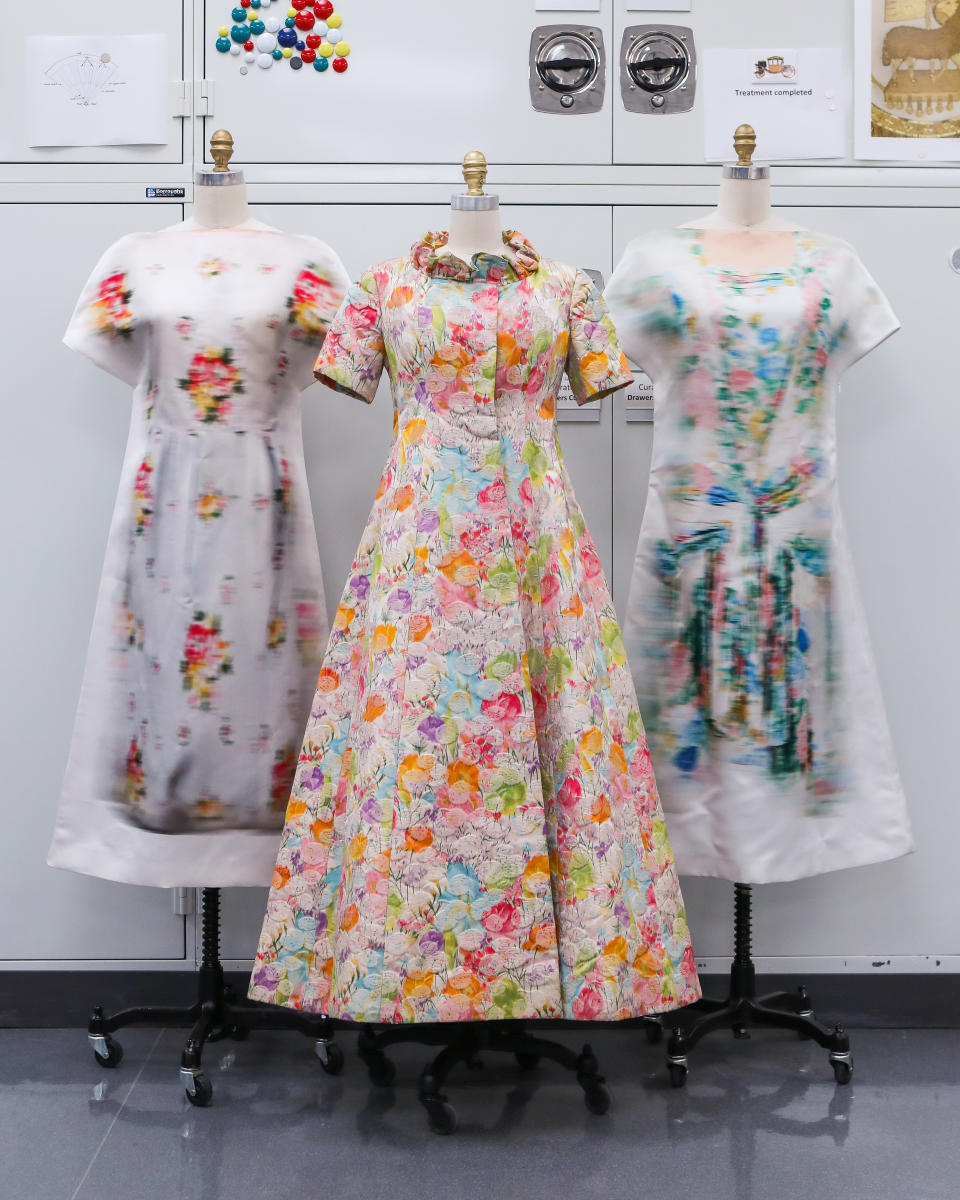
Loewe’s J.W. Anderson’s reputation for playing with technology and the analog in his work made him and Loewe an apt sponsor, Bolton said. The Met’s team is trying to figure out a way to incorporate the grass-growing coat from Loewe’s spring men’s show so that it can be seen growing and dying during the exhibition (but is fighting a lack of natural light).
Drawing from the Costume Institute’s collection of 33,000-plus items, Andrew Bolton and his team narrowed down the selection to 250 pieces. Spanning four centuries, the assortment will date back to shoes and accessories from the 12th and 13th centuries, which according to myth, were retrieved from the Thames River.
Nature is the throughline in the collection, Bolton said, “as well as a broader metaphor fashion in terms of fragility, ephemerality, renewal, rebirth and regeneration.”
Bolton led attendees to the temperature-controlled area where Costume Institute’s garments “sleep” and the conservation rooms where they are restored and brought back to life in an hourlong walk-through that felt personal — just like the spring exhibition aims to be.
The theme will also carry over to the Met Gala, which will be held May 6. The dress code may have a nature theme, according to Bolton, which could translate to plenty of floral dresses on the red carpet. Co-chairs have not yet been announced.
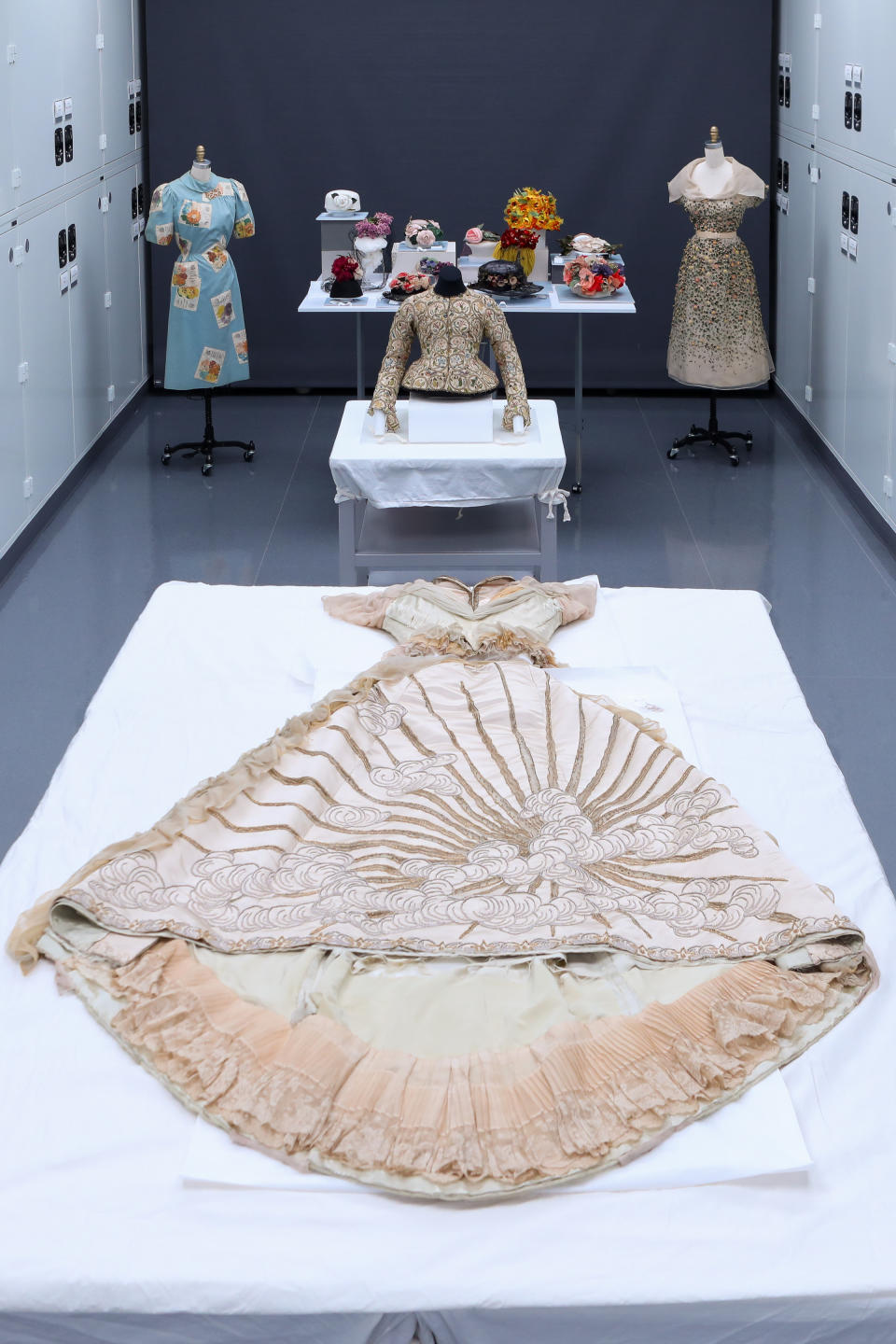
Inspiration hit from a Charles Frederick Worth ballgown circa 1877 that was fanned out flat on a table, Bolton said, “It’s suffering from what we call inherent vice, which is the condition that is intrinsic to a garment. It has a feature or characteristic where it is literally self-destructing or self-deteriorating. There is nothing that we can do about it. There is not stitching or adhesive treatment that will bring it back to life.”
The gown may be encased “floating in a glass coffin” with built-in magnifying glasses so viewers can understand its fragility, Bolton said. “It’s highlighting the sense of sight through these macro analyses, but also highlighting senses that we don’t get to see anymore — smell, touch and even the sound of fashion. There’s something called ‘scroop,’ which was the sound that taffeta or silk makes. In the 19th century, that was very much marketed — the higher the scroop was the more expensive the dress was. In one of the rooms, you will hear the scroop, the taffeta rustle,” Bolton said.
The elaborate satin gown suffers from “warp loss” on the bodice and skirt, and therefore cannot be displayed on a mannequin so it will be shown flat in “Sleeping Beauties.” It will also be brought back to life with technology with a CGI version of the dress that will be presented as a hologram — a fully embodied version of the dress floating about the actual garment like an ectoplasmic soul. Adorned with an incredible cloud and sunburst motif, the ballgown is one of the Costume Institute’s masterworks and was donated by the prominent socialite Caroline Schermerhorn Astor.
Bolton said, “If you watched ‘The Gilded Age,’ she’s the snooty one who invented the Four Hundred Club.”
Along with computer-generated imagery, the show will incorporate augmented reality, artificial intelligence, soundscapes, olfactory infusions, video animation and light projection to try to reel in visitors on multiple levels. Photoographer Nick Knight’s ShowStudio will help head up the technological activations.
Getting back to nature, guests can expect to see an intricate Elizabethan bodice that dates back to 1615 or 1620. The linen garment features an array of types of stitching and is covered with colorful embroidery depicting peapods that open up, birds eating insects and bees buzzing around flowers. It will be paired with a Karl Lagerfeld fall haute couture 1994 dress inspired by Elizabethan embroidery.
As an added dimension, the plan is to project an animation map of the embroidery onto the gallery’s walls and emboss them so that visitors can actually feel the embroidery, including the flowers blooming and bees buzzing.
Another sensorial element will riff off “the Miss Dior dress” from 1949 that was used to launch the Miss Dior scent. While the original is stored in the Dior archives, the house is remaking a miniature version that The Met will recast in another material — porcelain was ruled out — so that people can feel the outline of the dress and the embroidery. Raf Simons’ reproduction of the same dress in black leather will be displayed with it — but hands off that one.
Set up in three zones — Land — as in gardens and the earth, Sea and Sky, the architectural firm Leon Leon is working with The Met’s design department to execute the complex design that will feature what looks like a series of connected bell jars. Motioning towards an assortment of colorful aged hats and two dresses, Bolton said the scent artist Sissel Tolaas has created an apparatus that has captured the smells of the hats and garments in the Met’s first move into scent. “We tried to do the smelliest hats to have the biggest smell. In some cases, we will recreate the smell of the garment and others will show the molecular structure of it,” he said.
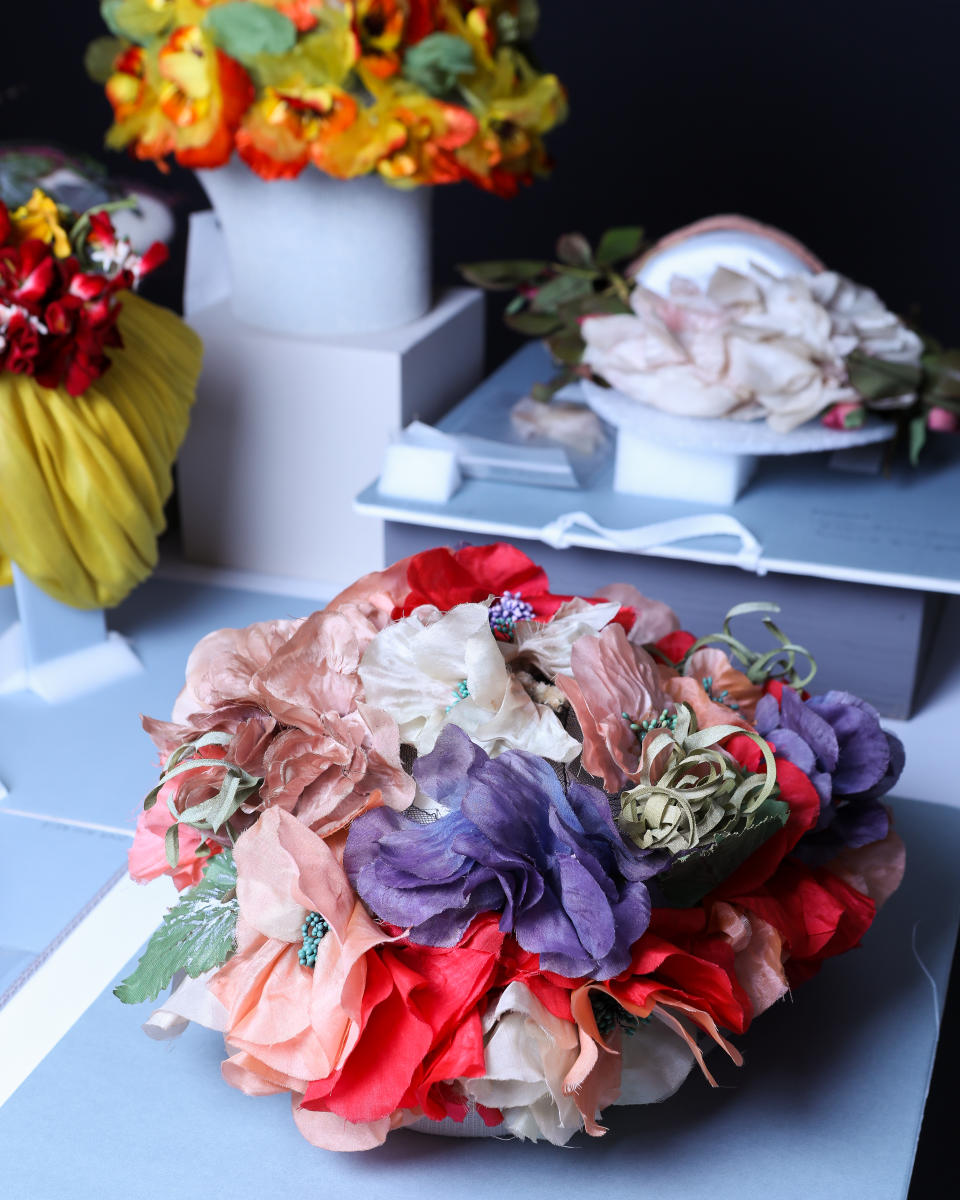
There will also be Schiaparelli’s seed packet dress from 1939 for Millicent Rogers, who is believed to have worn it for gardening. The frock has a few of the designer’s signatures, like an elasticized accents at the waist and a zipper up the back, which were anathemas at that time.
The scent of the garment will be wafted through the gallery. Tolaas is said to be able to truly capture the scent of the wearer — perfume, cigarettes, etc. — into what Bolton called a “very poetic scent.”
“I like the idea of what you think it’s going to smell like and what it actually smells like — so perception and reality,” he said.
Another expected showstopper is a Madeleine Vionnet black tulle evening dress adorned with black raptor motifs. Noting how in Jungean psycho-analysis black birds are signs of death and destruction, Bolton said the fact that the designer used them just before the outbreak of World War II was ominous. Met attendees will also find a swarm of black birds projection-mapped onto the walls and hear their squawking to relay a sense of fear. “If you are afraid of birds, I wouldn’t recommend going into the gallery,” Bolton said.
A gentler hint of nature can be found in the 2011 Sarah Burton-designed butterfly dress that some might recognize from when actress Elizabeth Banks wore it in “The Hunger Games.” The fact that it was made from feathers to look like monarch butterflies and was created for Burton’s first collection for the house signaled rebirth and renewal too.
Sleeping Beauties will also feature a pair of dresses by Charles James, who was known to see a photograph of a client wearing one of his dresses in the society pages of a newspaper, and thinking she looked awful, he would as for it back on the pretense that he planned to make an adjustment, and sell it to a different client, Bolton said. “People still went back to him and loved him.”
For another sound element, there’s an Alexander McQueen spring 2001 gown made of 1,200 razor clam shells, inspired by a walk Alexander McQueen took with his boyfriend on a Norfolk, Va., beach. When model Erin O’Connor wore it on his runway, McQueen had instructed her “to go mental and start crushing all the razor clam shells. “They were subsequently remade, when the dress was used for another Costume Institute show, “Savage Beauty.” The thunderous soud of razor clam shells will be recorded and that will be piped into the gallery.
Aboout 80 percet of the exhibition’s items will be women’s and he remainder will be men’s. While there is plenty of biographical information tied to “Sleeping Beauties,” The Met doesn’t plan to highlight the wearer or their status, but will magnify how the imprint of the wearer “is always carried with the garment no matter who he, she or they are,” Bolton said.
The immersive emphasis stemmed from his frustration about how you can tell the full story of an object by sight, particularly when it comes to issues of accessibility for people who suffer from sensory depletions. Another factor was “the fact that fashion is such a living art form – more than painting, sculpture or any other living form. We wanted to breathe life back into an art form that was lived in and embodied by a person,” Bolton said.
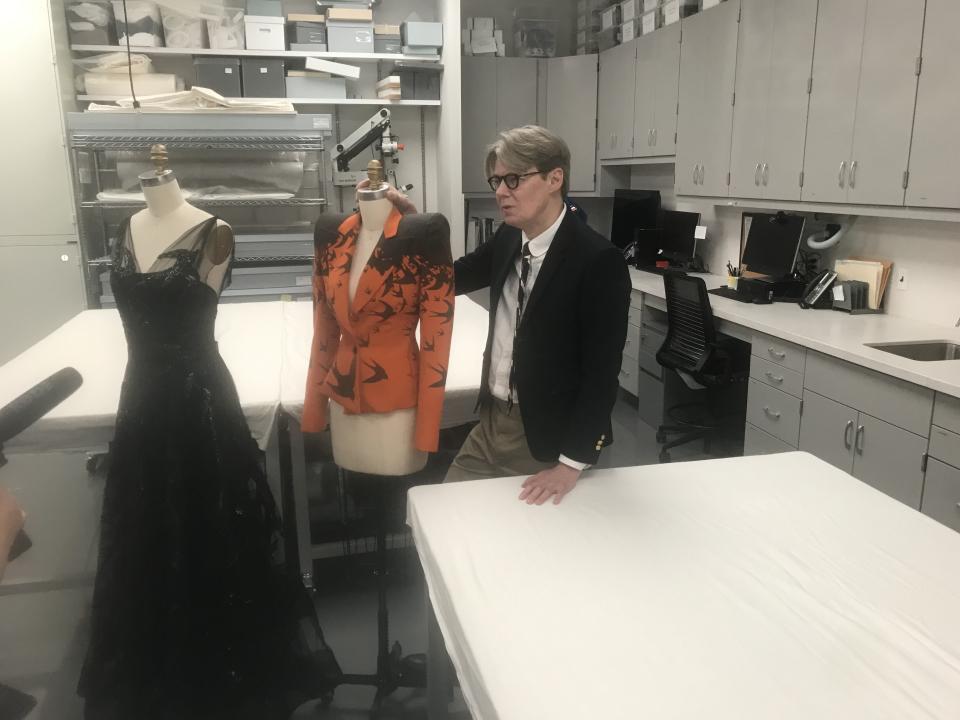
The nature focus of “Sleeping Beauties” is meant to tie into sustainability.
“The idea of treating our environment better and the healing power and regenerative idea. Walking through the exhibition, what will punctuate it will be garments that engage with statistical practices or the ethics of fashion. We have garments from the 18th century that were like proto-Margiela pieces. The textiles were so important that they were almost repurposed. The idea of repurposing and reusing fabrics wasn’t new. It often has to do with the preciousness of the material. It was a completely different value system,” Bolton said.
Best of WWD


